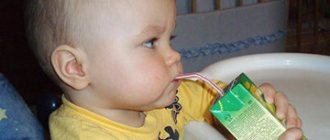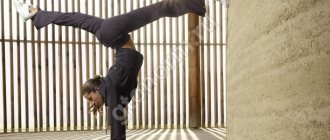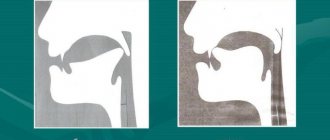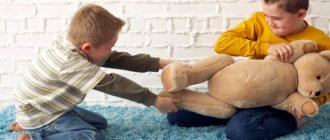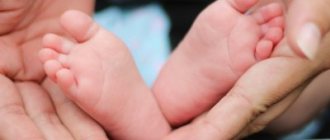How to blow your nose correctly?
- Blowing your nose in a timely manner helps get rid of excess mucus in the nose. Cleaning the nose does not shorten the duration of the disease, but significantly improves the quality of life.
- Children begin to clean their nose properly after one year. Parents must guide children's movements in the right direction. Without the help of adults, a child may not learn how to maintain nasal hygiene even as a toddler.
It is important to teach this in a timely manner.
To help a child blow his nose, several conditions must be met:
- Prepare a paper and rag handkerchief.
- Blow each nostril in turn, pressing the second nostril with your finger.
- While blowing your nose, open your mouth slightly to allow oxygen to enter.
- You cannot blow out the contents of your nose with maximum force, as this can cause complications.
At what age is it best to teach a child to blow his nose?
- It is best to teach a child to blow his nose at 1.5-2 years old. Age depends on the individual characteristics of the child. If a child is unable to blow his nose at 2 years old, parents should be patient and use other methods to clean the nose.
- Training is best done in a playful way and in a good mood. A sick child is capricious and is unlikely to respond to your requests.
- Tell your children that if they do not want to learn how to properly clean their nose, you will have to use medications and devices to clean your nose. Or visit a doctor at the hospital.
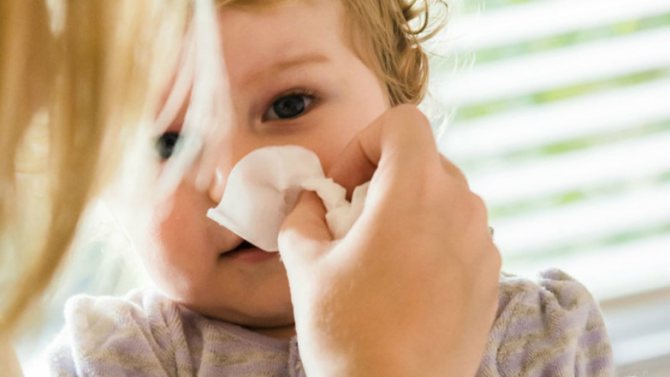
It's better to start at one and a half years old
At what age is it recommended to teach children to blow their nose?
Most pediatricians are confident that the optimal age for a child to be ready to learn new skills is 1.5-2 years. From the age of one and a half, children begin to understand speech addressed to them and can fulfill small requests.
Playful learning at this age is easy, and about 60% of children master nose-blowing skills within a few weeks. If this doesn't happen, don't worry.
All children are different: some easily learn new things, while others require repeated repetitions and training.
What parents shouldn’t do if he can’t blow his nose on his own:
- yell at a child;
- become irritated and become louder;
- snatch a handkerchief or napkin from the baby’s hands;
- make sudden movements and waves of the arms (despite the relatively high age, a child of 1.5 years old can easily get scared and categorically refuse to study next time).
How to choose the best time to study?
Many parents make a common mistake - they start teaching their baby to blow his nose when he is sick. It would seem that this is correct, because how can you teach a baby to blow his nose if his nose is clean?
This approach rarely results in positive results. The parents’ task is to teach their child the technique of blowing his nose and the correct movements, so that when the time comes, the baby can put the skills into practice.
A child should be taught to blow his nose when he is completely healthy, well-fed, and nothing bothers him. The recommended frequency of training is 30-40 minutes every week.
How to teach a child to blow his nose correctly?
Children have a harder time understanding things that are obvious to adults. For better assimilation, it is better to present information in parts. Explain it step by step first, and then combine all the stages into a single process.
- Before clearing the nose, the child should wash his hands and prepare tissues. Explain to him why it is important to keep his hands clean and not throw napkins around.
- Play games that teach your baby how to blow air out of his nostrils. Observe the sequence of emptying your nostrils, instilling a healthy habit.
- To teach your child to blow his nose, become a personal example for the baby, show how you clean your nose. Children love to imitate adults.
- If attempts are unsuccessful, give the child time to rest - long, sharp exhalations can cause headaches and pressure surges.
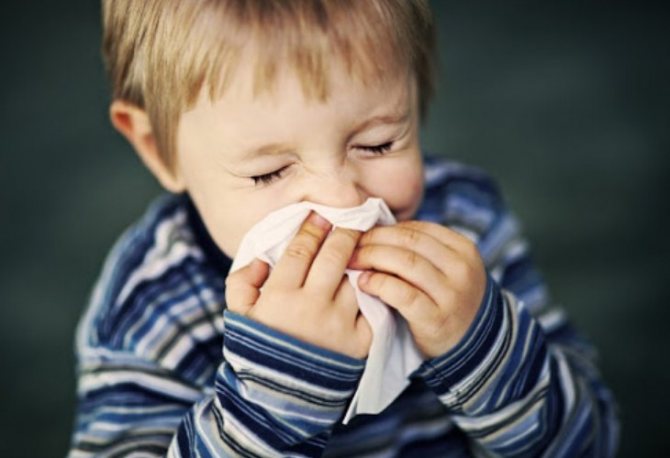
The main thing is that the child does not blow his nose too much
When to start teaching a small child to blow his nose
After you have asked yourself the question of how to teach a child to blow his nose, you should decide when is the best time to start teaching your child a new skill, and how to choose a favorable moment for learning.
We recommend: Which humidifier is better to choose if you have a child at home?
You need to teach a child to blow his nose at a time when the child is healthy, can breathe freely through his nose, and is in a good mood, otherwise, your requests will receive a response in the form of whims and crying.
Before you start teaching your child to blow his nose, be patient, it is possible that the baby will not succeed at first, remember that he needs your support, encouragement and he will definitely succeed!
How to teach a child to blow his nose at 2 years old?
The best approach to a small child is a playful form of communication. We offer a series of games that will help your child learn to blow his nose.
- The snort of a hedgehog. Tell your child how a hedgehog snorts through its nose. Show what an adult snort looks like. Offer to repeat after you. While playing, close one nostril at a time. Focus on the nostrils as a prerequisite in this game.
- Playing with cotton wool. Tear off several small pieces of cotton wool and place them on a smooth surface in front of you. Try moving the pieces from place to place using your breath. Let your child participate. Suggest making the task more difficult by blowing air through your nose. Assign a section of the table to your child, which he should protect from cotton wool by breathing.
- Games with soap bubbles. Have a soap party while swimming. Play with foam. Invite the child to blow on it first through the mouth, then through the nose. A simplified version of this game is to blow a soap bubble with your nose while walking.
- Blowing away dandelions. Children love blowing dandelions. Show your child that the inflorescence can be blown off with the nose.
- Repeat for the teapot. Ask your child to show how the kettle boils. Match the teapot spout with a baby spout.
- Ships on the water. Fill a basin with water. Make a paper boat or use dried leaves from trees. Blow on the boat through the bow. Invite your child to transport the ship to the other side.
- Blizzard. Shred a piece of paper with scissors. Place the cuts on the child's hand. Ask to make a snow blizzard by blowing artificial snow through a spout.
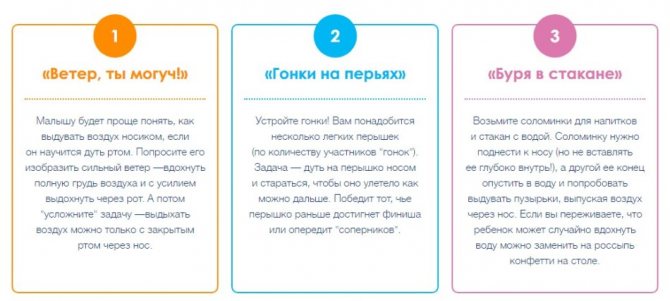
Game options
How to teach a child to blow his nose - video tips from Dr. Komarovsky
From this video you will learn the opinion of Dr. Komarovsky regarding blowing your nose. The pediatrician tells how to blow a child's nose correctly, as well as the consequences of incorrectly using the technique of clearing snot from the nose.
Blowing your nose is a necessary skill for every person, especially for a small child. There is a single correct technique for blowing your nose, which you need to introduce your baby to in the first years of life. This can be done by leading by example, or by using educational games. Tell us in the comments, how did you teach your child to blow his nose correctly?
We recommend reading:
- How to potty train a child in 7 days using the “Satisfied Baby” system. Details about the daily routine of a child aged 1-3 years. Panties for potty training a child: principle of operation. A spoiled child: reasons, tips for parents.
How to teach a child to blow his nose at 3 years old?
At 3 years old, the child is already completing assigned tasks.
If he categorically does not want to blow his nose, try to find an approach in several ways:
- Game form of learning.
- Write a story about yourself about what a clogged nose leads to if you don’t blow your nose.
- Play doctor. Start by treating a runny nose in an adult, then the child can trust his nose too.
- Offer an alternative - or blow your nose yourself and use cotton swabs to clean your nose.
- Tell us about nasal rinsing as a result of clogged nasal passages.
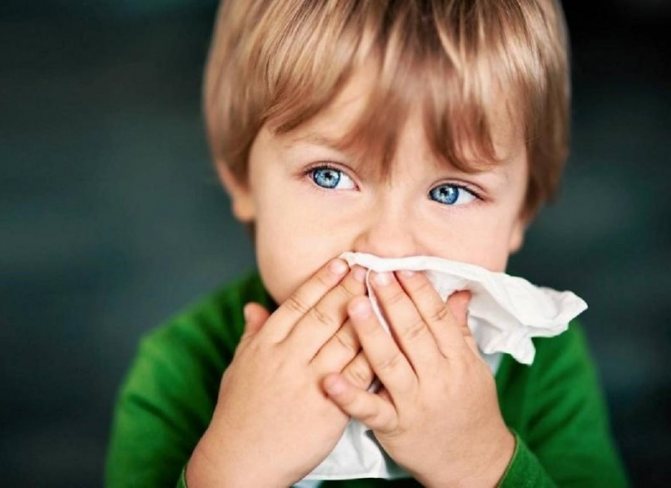
A prolonged runny nose can lead to inflammation of the auricle, so approach the process responsibly. After all, from childhood it is very important to teach a child to blow his nose.
How to clean your child's nose at home
If your child is too small or has trouble blowing his nose, clean his nose yourself. Do not use any antibacterial or vasoconstrictor drugs without a doctor's prescription!
1. Using cotton wool flagella:
- Rinse your nose with saline solution (2-3 drops in each nostril) or special saline drops to soften the snot.
- Twist several thin flagella from sterile cotton wool and dip the tip of the flagellum in Vaseline (olive or peach) oil.
- Roll the flagellum in your nose, gradually pulling it out.
2. Using a nasal aspirator or rubber bulb:
- If the snot is thick enough, then you need to soften it with saline solution or saline drops.
- Dip the tip of the aspirator or syringe into the oil, press the “bulb” so that the air comes out of it.
- Insert the tip into the baby's nose and release the bulb, so the snot is sucked into the aspirator.
- Electronic aspirators are even easier to use: just hold the tube to your nose and press a button.
IMPORTANT! Do not use cotton swabs to clean your baby's nose! They are too hard! This procedure is quite unpleasant for the child; he will most likely twist his head or even push you away with his hands; if there is resistance, the cotton swab can damage the baby’s nasal passage. The same applies to syringes: they are not intended for cleaning the nose!
How to clean your child's nose if you can't teach him to blow his nose?
If you can't teach your child to blow his nose yet, don't despair. There are several methods you can use to clean your nose at home.
- Cotton wool bundles. Soften the nasal passages with saline or sea water - drops or a mild spray. Form cotton wool flagella with your hands, moisten the ends with Vaseline oil. Scroll the device in the nasal passage and remove it along with the nasal discharge. For the second hole, use a new harness.
- Rubber bulb. If the snot has become too thick and cannot be blown out of the nasal passages, use sea water or saline solution to soften it. Insert the aspirator tip into the spout one at a time with the bulb clamped without air. Release the bulb and hold it while he draws in nasal discharge. Repeat the procedure 2-3 times for each nasal passage.
What to do if your baby doesn’t learn the lessons of blowing his nose well
If a child cannot blow his nose, you need to be guided by the situation. When the exercises do not cause a negative attitude in him, it is worth patiently continuing the training. Moreover, all of the exercises listed are useful for the proper functioning of nasal breathing. Imagine, conduct experiments, come up with new fun. For example, pieces of paper can be mistaken for small airplanes, or you can replace them with feathers or confetti and continue playing.
But when you notice that your child is nervous or angry, do not get upset with him, but temporarily stop the activity. Let the student have a good rest, and you think about how to diversify the game. A little persistence, and after a while you will enjoy a positive result.
How to ease the passage of mucus from the nose?
Parents can not only teach their child to blow his nose, but also create conditions for comfortable separation of mucus from the nose.
- Humidify the air in the room; the nasal passages should not dry out.
- When sleeping at night with a stuffy nose, you need to place a cushion under the mattress so that the upper body is elevated.
- If you use a tissue frequently, the skin under your nose may become red and inflamed. Paper napkins are a softer and more hygienic method.
- For thick mucus, use runny nose soothing products .
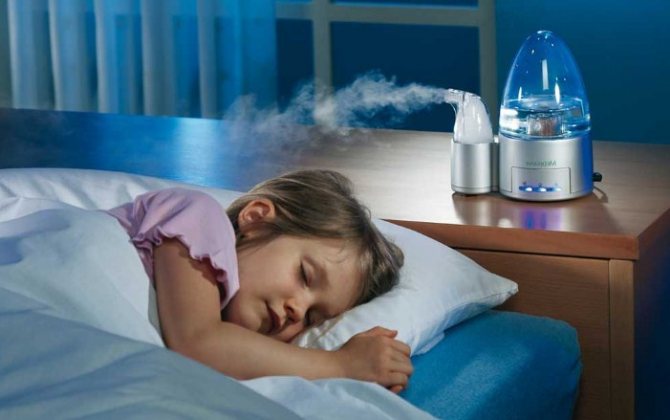
If your child fails to blow his nose on his own, maintain composure. Perhaps your child needs to grow up to learn a new skill. If you have not succeeded in this before the age of 3, you can teach your child to blow his nose at 4 or 5 years. But usually, in a playful way, from the age of 3, a child can blow his nose on his own.
Interesting articles on the site:
- My girlfriend is pregnant - what should I do if my girlfriend gets pregnant?
- What games should children play at a children's party or birthday?
- Counting books for children - 3, 4, 5, 6, 7, 8, 9, 10 years old
- Stool in a bottle-fed baby
- What games can adults and children play together without a computer?
At what age should you start training?
It is too early for newborns and infants to learn to blow their nose. They remove snot from their nose using a special nasal aspirator or syringe. This procedure is not very pleasant, so children are often capricious when trying to remove mucus.
It will certainly become much easier for parents when the baby can perform the procedure independently. Before you teach your child to blow his nose, make sure that he consciously understands and fulfills your requests; this becomes possible at the age of 1.5 - 2 years.

